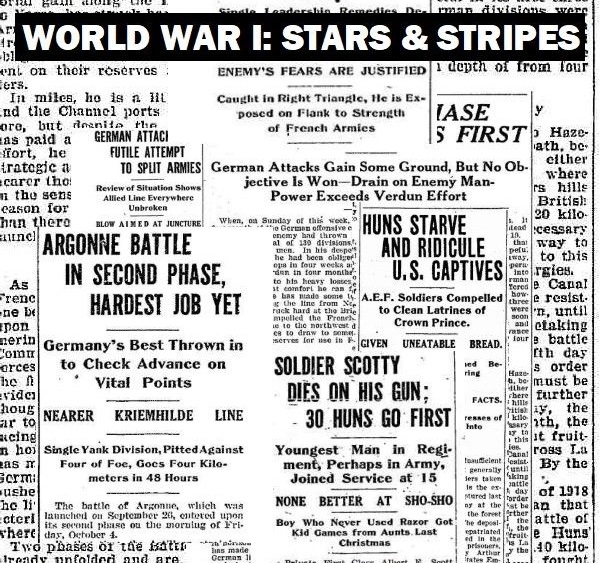
World War I Newspaper: The Stars and Stripes
$19.50
World War I Newspaper: The Stars and Stripes
Description
Stars and Stripes: The AEF Newspaper in WWI
Timeline of Main Events (Based on the Source)
- August 1914: World War I begins with fatigued British and French troops already engaged in fighting.
- April 6, 1917: The United States declares war against Germany. At this time, the US has a standing army of 127,500 officers and soldiers.
- May 1917: General John Joseph “Black Jack” Pershing is designated the Supreme Commander of the American Army in France, and the American Expeditionary Force (AEF) is formed.
- Throughout 1917 and into 1918: American divisions are primarily used to reinforce French and British units in defense and attacks against German positions.
- February 8, 1918: The first issue of The Stars and Stripes, the official newspaper of the AEF, is published in France. It is an eight-page weekly featuring news, sports, poetry, and cartoons, written by servicemen for servicemen. The first issue of 1,000 copies quickly sells out.
- March 15, 1918: The Stars and Stripes publishes an editorial criticizing popular sports heroes like Frank Moran and Fred Fulton for not enlisting in the military.
- April 12, 1918: The Stars and Stripes sports page features a headline using sports terminology to report on the war: “Huns May Request Waivers on Kaiser.”
- April 26, 1918: Another example of sports-related war coverage in The Stars and Stripes with the headline: “Allies Ahead in Big Extra Inning Battle.”
- May 3, 1918: The Stars and Stripes inaugurates “The Army’s Poets” column, which quickly becomes the most widely read section of the newspaper, featuring poetry written by the soldiers themselves.
- May 10, 1918: An issue of The Stars and Stripes includes an advertisement for Wrigley’s Chewing Gum, noting its popularity with British, Canadian, and French forces. The same issue features Cyrus LeRoy Baldridge’s cartoon “The Girl We’re All Fighting For.”
- October 18, 1918: The Stars and Stripes publishes Cyrus LeRoy Baldridge’s cartoon “Then We Will Have Peace,” depicting the empty throne of the Kaiser with a corpse in front.
- November 11, 1918: Germany signs the Armistice, marking the end of World War I. By this time, the AEF has evolved into a modern, combat-tested army. The United States has sustained an estimated 360,000 casualties.
- November 15, 1918: Baldridge’s “Then We Will Have Peace” cartoon is published again in The Stars and Stripes.
- By its one-year anniversary (February 1919): The Stars and Stripes reaches a high circulation of well over half a million readers.
- June 13, 1919: The final (seventy-first) issue of The Stars and Stripes is published in France.
- Post-War: The United States learns valuable strategic lessons from World War I and develops an experienced officer corps that will be crucial for mobilizing and commanding troops in World War II. By the end of the war, four million men have served in the US Army, with an additional 800,000 in other military branches.
Cast of Characters (Principle People Mentioned)
- John J. Pershing: (General) Designated as the Supreme Commander of the American Army in France in May 1917. He wanted a newspaper written by servicemen for the soldiers and was instrumental in the creation of The Stars and Stripes.
- Alexander Woollcott: (Second Lieutenant) A journalist and New York Times drama critic who served on the editorial staff of The Stars and Stripes.
- Harold Ross: (Journalist) Served on the staff of The Stars and Stripes. He later went on to found The New Yorker magazine.
- Grantland Rice: (Journalist) Served on the staff of The Stars and Stripes, known for his influential sports writing.
- Guy T. Viskniskki: (Second Lieutenant) From the Wheeler Newspaper Syndicate and also associated with the New York Times, he contributed his experience to The Stars and Stripes.
- John Winterich: (Bibliophile) Served on the editorial staff of The Stars and Stripes, likely contributing to the literary content.
- Abian “Wally” Wallgren: (Private) A cartoonist from the Washington Post who created popular and irreverent cartoons and “Helpful Hints” for The Stars and Stripes that poked fun at army life.
- Richard H. Waldo: (Captain) Former employee of the New York Times and Good Housekeeping, he devised the distribution system for The Stars and Stripes using soldier distributors and various modes of transportation.
- Cyrus LeRoy Baldridge: (Cartoonist) A prominent U.S. cartoonist whose work, often considered propaganda, was reprinted in The Stars and Stripes, including “Then We Will Have Peace” and “The Girl We’re All Fighting For.”
- Frank Moran: (Boxer) Mentioned in an editorial in The Stars and Stripes criticizing athletes who did not enlist in the war effort.
- Fred Fulton: (Boxer) Also mentioned in the same editorial as Frank Moran, as an example of an athlete who should have been serving his country.
World War I Newspaper: The Stars and Stripes
The complete seventy-one-week run of the Stars & Stripes World War I.
This eight-page weekly featured news from home, sports news, poetry, and cartoons, with a staff that included journalists Alexander Woollcott, Harold Ross, and Grantland Rice. The Stars and Stripes was published during World War I in France by the American Expeditionary Force (AEF) of the United States Army from February 8, 1918, to June 13, 1919.
General John J. Pershing wanted a newspaper written by servicemen for the soldiers on the battlefront of the Great War. The newspaper’s mission was to strengthen the morale of the troops and to promote unity within the American forces serving during World War I, then widely scattered and fulfilling many apparently unrelated functions. The venture was immediately popular with the soldiers, quickly selling out its first issue of one thousand copies. Although designated as the “official newspaper of the AEF,” its independent editorial voice earned the confidence and affection of common soldiers. The Stars and Stripes grew to a high-circulation newspaper, reaching well over half a million readers by its one-year anniversary.
The Stars and Stripes, published exclusively in France during its seventeen-month run, used a layout typical of American newspapers of the day, with wide columns, “all-cap” headlines, and lots of illustrations. The editorial staff assigned to the newspaper was composed mostly of enlisted men, including several career journalists. Second Lieutenant Guy T. Viskniskki from the Wheeler Newspaper Syndicate, New York Times drama critic Alexander Woollcott, bibliophile John Winterich, and cartoonist Abian “Wally” Wallgren of the Washington Post were among those who contributed their experience and skill.
The Stars and Stripes carried the same type of material as the hometown newspaper typical of the time, including illustrations, sports news, letters to the editor, helpful hints, and advertisements. Its layout and content reflected a staff that had already acquired newspaper experience in civilian life. The newspaper’s content contributed to its success, as did its distribution system. By a feat of ingenuity and perseverance, agents delivered the paper to the majority of the subscribers on the date of publication.
Captain Richard H. Waldo, who had worked at the New York Times and Good Housekeeping before his enlistment, devised a system by which soldier distributors, or “field agents,” at each Army Post Office coordinated distribution by rail, truck, and automobile (including three Cadillacs). French news dealers also delivered copies of the weekly to field agents and to hospitality centers staffed by the YMCA known as “YMCA huts.” In addition, distributors mailed more than two hundred thousand copies to military bases and individual subscribers back home in the United States.
In every issue of The Stars and Stripes American companies and organizations, as well as French eateries and shops, competed for the attention of the servicemen with advertisements aimed at enticing the doughboys (as American soldiers were called during World War I). Although the advertisements exhibited considerable reserve and decorum by today’s standards, their content was intended to appeal to the almost exclusively male audience.
Companies as diverse as American Express, American Safety Razor, Gillette, Credit Lyonnais Bank, and Brentano’s Books, along with organizations such as the YMCA, Christian Science Reading Rooms, the Harvard Club of Paris, and the Jewish Welfare Board, courted the soldiers’ business. Wrigley’s Chewing Gum was a regular advertiser, boasting that “even before American soldiers and sailors landed, the British, Canadian and French forces had adopted Wrigley’s as their wartime sweetmeat” (May 10, 1918, p. 8, col. 5).
Absent today’s truth-in-advertising regulations and product liability lawsuits, tobacco ads, such as those claiming that Fatima cigarettes were the brand smoked by the most important people in Washington, appeared in almost every issue. Other products made excessive claims, as well. Adams Chewing Gum, for example, was said not only to relieve thirst, but also to prevent fatigue among weary soldiers on the march. In advertisements such as these, appearing throughout the pages of The Stars and Stripes, American and French companies reveal what they imagined might allure the doughboys, thereby offering insight into the popular culture of American soldiers of the time.
The Stars and Stripes used illustrations to communicate ideas, especially those aimed at justifying military goals and encouraging the troops’ adherence to the war effort. In the early issues, editors reprinted cartoons from some of the most prominent U.S. newspapers and magazines, such as Life, New York World, and the Philadelphia Press. In many cases, the images selected by the editors would be considered propaganda by today’s standards. Cyrus LeRoy Baldridge’s cartoon “Then We Will Have Peace” showed the empty throne of the Kaiser with a corpse in front of it (October 18, 1918, p. 4, col. 4 and November 15, 1918, p. 4, col. 4); his drawing “The Girl We’re All Fighting For” depicted a soldier gesturing respectfully toward an image of the Statue of Liberty on the horizon (May 10, 1918, p. 1).
Besides expressing editorial opinion, cartoons entertained the troops, offering them humorous stories and images that satirized everyday life in the military. Many of these spoofs, written in 1918 and 1919, remain relevant today. The most popular among the soldiers were Private Abian A.”Wally” Wallgren’s cartoons and irreverent “Helpful Hints,” which poked fun at army conventions from food to uniforms to rank. When a new issue of The Stars and Stripes arrived, the soldiers scanned it first for the cartoons by “Wally” Wallgren.
Throughout the seventeen months of its publication, The Stars and Stripes dedicated a significant amount of space to soldier-authored material. The newspaper’s editors appreciated the poetry and sentimental ballads typical of the period. Poetry appeared in every issue of The Stars and Stripes. Although the newspaper occasionally published reprints of the poetry of famous poets, the soldiers themselves wrote most of the poems. “The Army’s Poets” column was inaugurated May 3, 1918 (p. 5, col. 1) and swiftly became the most widely read column in the newspaper.
Soldiers submitted more than seventy-five thousand poems for possible printing in The Stars and Stripes. Through their poetry, soldiers commented on life in the trenches, homesickness, patriotism, and the comradery essential for wartime success. The humor of the AEF doughboys tended to be a product of everyday experience, and their poetry reflects the hardships the men endured during World War I, so far from home.
The Stars and Stripes sports page covered professional sports like other United States newspapers, but also carried news of American Expeditionary Force (AEF) athletic events at the war front. In addition, the editors used sports terminology and slang in covering the war effort. Headlines such as “Allies Ahead in Big Extra Inning Battle” (April 26, 1918, p.6)* and “Huns May Request Waivers on Kaiser” (April 12, 1918, p. 6) appeared regularly across the top of the sports page, reporting a war event as if it were an athletic event. Even though sports news was provided for the soldiers at the front, the editorial board published reminders throughout the war that the soldiers themselves, not the professional athletes, were the real heroes of the day.
Popular sports heroes who failed to enlist were chastised in editorials such as this March 15, 1918, commentary on the Frank Moran-Fred Fulton boxing match: “As a matter of news, we printed in full the account of the Moran-Fulton boxing bout and gave it all the prominence as a sporting event it deserved. . . . An athlete with the extraordinary reach of a Fulton should be a mighty handy man with a bayonet. . . . It is no excuse for a fighting man to plead that service in the AEF would separate him from his family and a fat income. . . . A trained athlete, particularly one who has had the opportunity to lay away a tidy fortune at fighting, owes it to his country to do something in return. As we see it, Messieurs Fulton and Moran are anything but heroes” (p. 4, col. 2).
On April 6, 1917, when the United States declared war against Germany, the nation had a standing army of 127,500 officers and soldiers. By the end of the war, four million men had served in the United States Army, with an additional 800,000 in other military service branches. Once war was declared, the army attempted to mobilize the troops very quickly. The fatigued British and French troops, who had been fighting since August 1914, sorely needed the relief offered by the American forces. In May 1917, General John Joseph “Black Jack” Pershing was designated the Supreme Commander of the American Army in France, and the American Expeditionary Force (AEF) was born.
Throughout 1917 and into 1918, American divisions were usually employed to augment French and British units in defending their lines and in staging attacks on German positions. By the time Germany signed the Armistice on November 11, 1918, the American Expeditionary Force had evolved into a modern, combat-tested army recognized as one of the best in the world. The United States had sustained an estimated 360,000 casualties in the First World War, including 126,000 killed in action and 234,000 wounded.
In less than two years the United States had established new motorized and combat forces, equipped them with all types of ordnance including machine guns and tanks, and created an entirely new support organization capable of moving supplies thousands of miles in a timely manner. World War I provided the United States with valuable strategic lessons and an officer corps that would become the nucleus for mobilizing and commanding sixteen million American military personnel in World War II.
(Source: The Library of Congress)









Related products
-
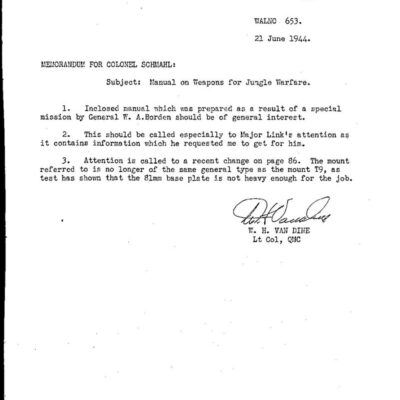
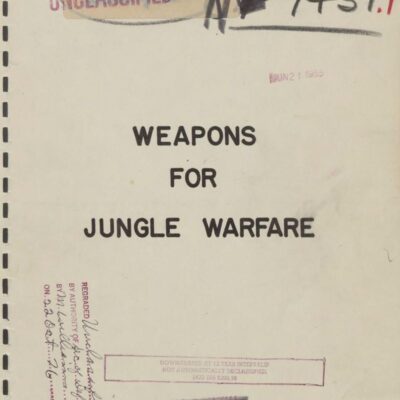
World War II Manual on Weapons for Jungle Warfare (1944)
$1.99 Add to Cart -
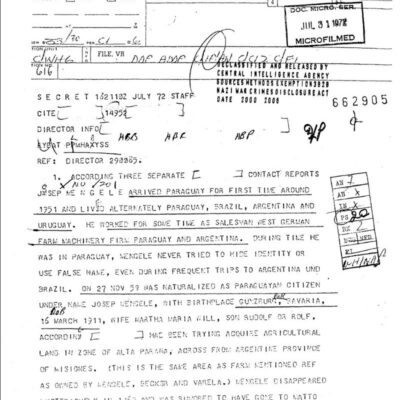
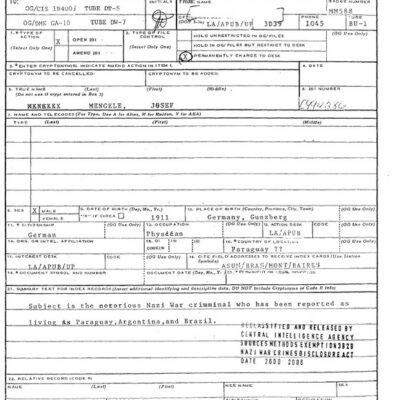
Josef Mengele CIA Files
$19.50 Add to Cart -
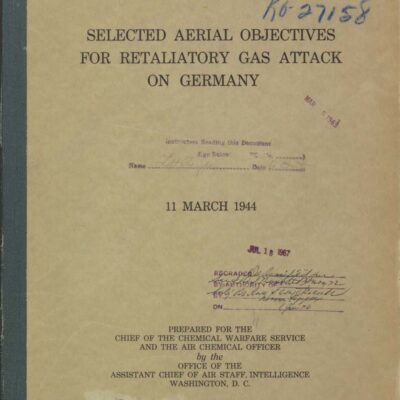
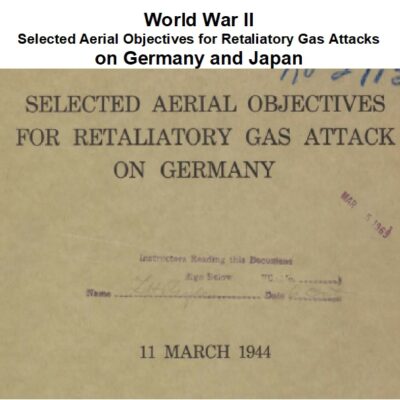
World War II: Targeted Aerial Objectives for Retaliatory Gas Attacks on Germany and Japan
$3.94 Add to Cart -
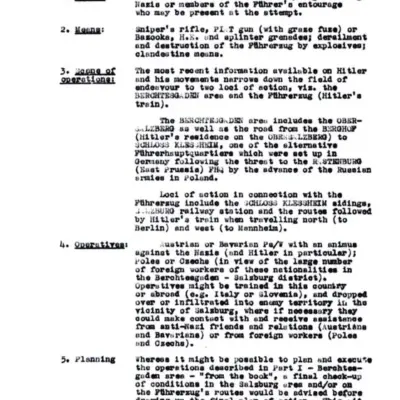
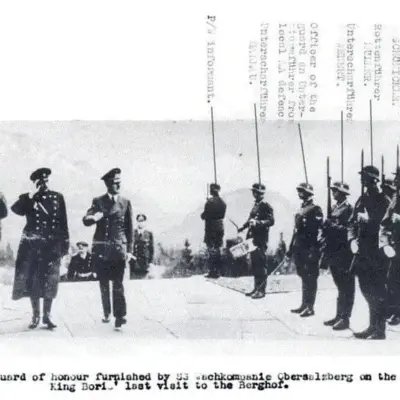
World War II: Adolf Hitler and Operation Foxley – British Assassination Plot
$19.50 Add to Cart